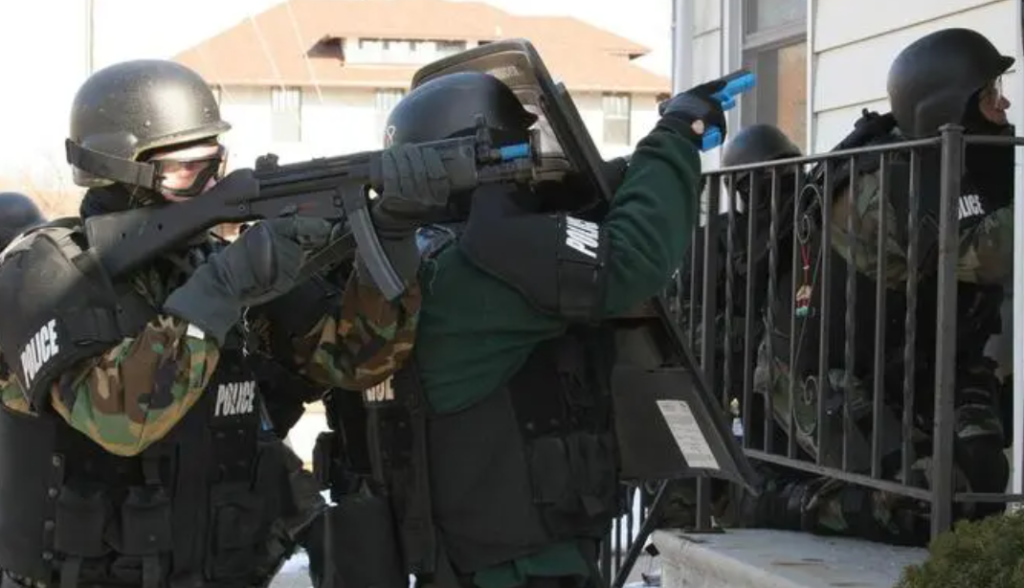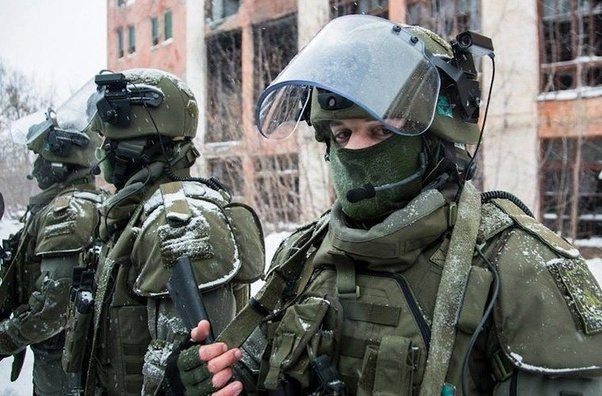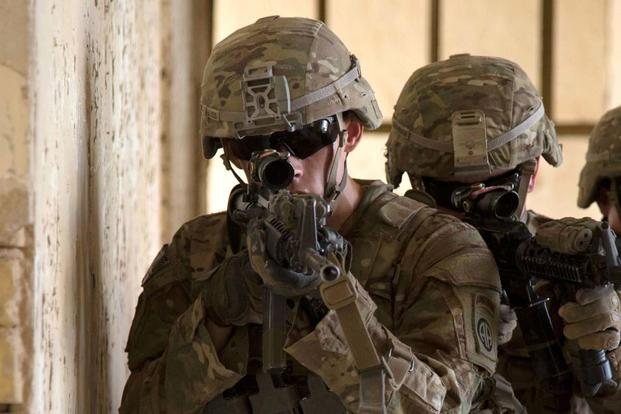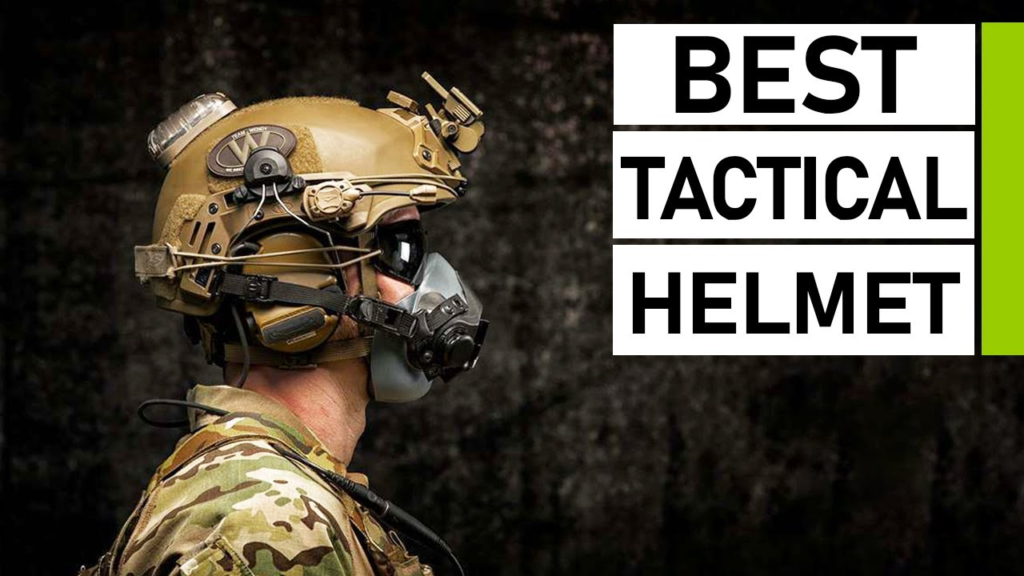WHAT IS A BULLETPROOF HELMET?
Bulletproof helmet, or more accurately, “ballistic helmet”, is a tactical helmet designed to protect the wearer’s head from ballistic impact (bullets), blunt impact and explosive debris. It is usually used with ballistic armor to provide comprehensive coverage and critical protection.
Traditionally, military members wear ballistic helmets in combat, which is also a common equipment for law enforcement in tactical situations. However, not only military people use bulletproof helmets, but many civilians seeking additional ballistic protection can also make good use of them. Especially in recent years, the demand for civilians to use bulletproof helmets or other bulletproof equipment is no less than that of the military.
We must mention that at present, there is no protective material on the market that can technically ensure complete “bulletproof”. At present, the tactical equipment produced on the market may be certified to resist a certain range of weapons, but this is enough for most use cases.
Remember this before buying a new ballistic helmet. They won’t stop every bullet from hitting you, but that doesn’t mean they still can’t save your life.
Let’s see how bulletproof helmets have evolved over the years.

HISTORY OF THE MODERN BULLETPROOF HELMET
At the beginning of the war, soldiers used cloth or leather to protect their heads. But they soon found that this means of protection was not enough to protect themselves in the cruel war, so they began to use some objects with high hardness as a means of protection.
For most of the 20th century, combat helmets were basically bowl shaped steel shells that could be fitted into helmet like linings.
The bulletproof helmet we know today was widely used for the first time in World War I. Known as the m1917 helmet, it is an American variant of the British Brody helmet. Its function is only to protect the soldier’s head from the rocks pushed by the explosion in the trench.
However, the m1917 helmet is often complained by soldiers that it is too heavy, and although the impact helmet can resist bullets well, the strong impact often causes more serious damage.
Subsequently, the U.S. government first used Kevlar in the manufacturing process of M1 helmet lining, making it one of the first Kevlar helmets. From World War II to 1985, the U.S. military used M1. It provided moderate protection for the flight of steel shrapnel, but it was still not bulletproof. Since then, bulletproof helmets have come a long way, but they are still making continuous progress.
From steel bowl to smooth headdress, it has evolved into a weapon against modern war
In 1960, DuPont developed a new material called aramid. Aramid fiber is a kind of durable fiber with high temperature resistance. This new material is called “Kevlar”. Its strength is five times that of steel. It has completely changed the design and production of ballistic bulletproof vests and bulletproof helmets.
In the 1970s, another strong synthetic fiber of aramid family – tuvalum appeared.
In fact, Kevlar and Twaron are five times stronger than steel, but they are also flexible and can be combined with a variety of products requiring strength and extreme durability, such as ballistic protective equipment.
The main difference between the two materials lies in their manufacturer and use time: DuPont invented Kevlar, which began commercial use in the 1970s. Teiji invented Twaron, which was first commercialized in 1986.
These materials have changed the progress of the whole industry.
It is clear that ballistic helmets have been developed to meet the needs of today’s military and law enforcement officials. They have undergone significant developments in shape, weight and materials, becoming stronger, lighter and smoother in tailoring, providing good visibility without sacrificing performance.
The M1 helmet was eventually replaced by the ground force personnel armor system (pasgt).
Pasgt was replaced by the modular integrated communication helmet (Mitch) designed and developed by the U.S. special operations command.
In 2002, the U.S. Army adopted Mitch and changed its design to advanced combat helmet (ACh).
Compared with the future military helmet – enhanced Combat Helmet – it can protect people up to NIJ level 4. You often see these acronyms used to refer to different types of helmets and how they are used.
Today’s ballistic helmets are dual-purpose. They can not only protect the head from bullets, blunt blows and debris, but also serve as mounts for additional equipment. With the progress of combat technology, many modern helmets, especially military helmets, must be able to support communication equipment and various equipment and accessories, such as NVG shield (night vision goggles). The progress of helmets also gives the army and people in need the ability to deal with danger and response under different circumstances.

TACTICAL HELMET TYPES
Today, there are three main types of helmets on the market: future assault shell technology helmets (called fast helmets), modular integrated communication (Mitch) helmets and ground force personnel armor system (PASGT) helmets.
Each helmet has a different history, design and use.
Pasgt Helmet
Pasgt (pronounced Paz get) is the oldest and possibly the most influential design of the three ballistic helmets available for general purchase. The U.S. military used it as an integral part of the protective equipment kit from 1983 to the mid-2000s, which also includes ballistic vest.
This ballistic helmet is a proven real model and is still used by the U.S. Army Reserve and the U.S. Navy for sailors on warships. This is the original gold standard for ballistic protection.
The main features of the helmet include a shell usually made of multi-layer aramid, a low cut on the ears and a lip on the eyebrows. It is available in a variety of colors and patterns for different arms and weighs 3.1 pounds to 4.2 pounds (1420 grams to 1910 grams).
By accurately drilling holes in Kevlar, the helmet can be equipped with additional accessories, such as night vision goggle installation components and riot mask. The super mission and applicability make pasgt one of the most popular helmets.

MICH (“ACH”) Helmet
Mitch is the next generation of pasgt. It was released in early 2001. Previous experiments aimed to design a lighter and more comfortable ballistic helmet, but it is still as protective as its predecessor.
In 2002, when the U.S. Army adopted Mitch, the helmet was renamed advanced combat helmet (ACh).
The helmet weighs 3.0 pounds to 3.6 pounds (1360 grams to 1630 grams) and is made of advanced Kevlar materials. It has a series of camouflage patterns or pure black for special police teams.
The other two main goals created by Mitch are that the helmet can be easily installed on accessories and will not move forward above the eyes in some positions when pushed by the high collar of the interceptor (vest component of military bulletproof vest system).
In order to achieve these goals, the forehead is eliminated, both sides are raised, and the coverage is reduced by 8%, but the visibility, comfort and situational awareness are improved – which is a trade-off problem.
Guide rails are also added along the side for fitting accessories without drilling into Kevlar fibers.
Micivih is currently one of the helmets used by many armed forces, including the United States Marine Corps special operations command and the United States Air Force security forces

FAST Helmet
The manufacturing company OPS core launched the fast ballistic helmet at the shooting show in 2009 and soon distributed it to the U.S. special operations forces in Afghanistan. Today, many special forces use different variants of fast.
An obvious feature that distinguishes the fast helmet from other bulletproof helmets is that its side is highly cut and its ears are exposed. The helmet then bends down to protect the occipital bone at the back of the head.
The original purpose of this Gaucher design was for special operations at sea. More traditional helmet models have proved dangerous at high speeds at sea because water may enter the earmuffs.
The helmet’s high cut and side rail system allows the installation of additional combat accessories, including headphones, electronic earmuffs and night vision lens covers.
Obviously, Mitch’s helmet also supports these accessories, but another notable feature of fast is its weight. It is much lighter than Mitch, only 2.2 pounds to 3.0 pounds (1143 grams to 1354 grams), because it is made of carbon, unidirectional polyethylene and woven aramid composites.

NON-BALLISTIC HELMETS——BUMP/Crash HELMET?
Some tactical helmets have ballistic resistance, while others do not.
Crash helmet (non ballistic helmet) is not suitable for any type of shooting, but it is designed to prevent other impacts that may be encountered in combat situations, such as shrapnel or falling debris.
During natural disasters such as tornadoes and hurricanes, anti-collision helmets are also a good protective equipment.
They are significantly cheaper than ballistic helmets and are very light, so they are also suitable for tactical training scenarios.
WHAT IS A BUMP HELMET MADE OF?
Crash helmets are usually made of polymer plastic or carbon fiber. This makes the helmet very light, about 1.4 pounds (635 grams)
Today, most companies are integrating their patented pads and suspension systems to produce the best bulletproof helmets.
Today’s bulletproof helmets consist of a shell made of bulletproof materials such as Kevlar, a fixing system including a chin strap, and a suspension system composed of damping pads.
Some of the latest features of bulletproof helmets include:
Velcro accessories for end user modularization.
The right filler fits the head perfectly.
Hygroscopic material to reduce bacterial growth.
Enhance comfort and safety.
Retention system – 4-point chin band and dial adjustment at the back of the helmet.

ARE BALLISTIC HELMETS WORTH IT?
We have seen too much about the benefits and uses of bulletproof helmets and even bulletproof supplies, and we won’t elaborate too much here.
For those facing military combat, the use of helmets can reduce ballistic impact casualties by 19%, while the use of helmets can reduce casualties by half.
The research of NIJ in the United States shows that “although the head accounts for only 9% of the body area exposed in combat, it is still ‘hit’ by more than 20%.
So the answer is absolutely yes!
The warhead helmet is designed to protect the wearer from different combat threats, such as debris, bullets, shrapnel, explosion, etc. However, in combat, bullets are not always within the normal range. For example, a ballistic helmet is unlikely to protect you from snipers.
However, in the event of a short-range bomb explosion, a bulletproof helmet can save time by protecting your skull from being crushed to pieces and your brain from being damaged.
In addition, if you are in a vehicle facing an improvised explosive device, the ballistic helmet will keep your head in place in a collision or accident. At present, ACh is the most effective weapon against fragmentation and small arms shooting

IS A BALLISTIC HELMET WORTH IT IF YOU’RE NOT MILITARY?
It depends. Law enforcement, security, correctional and related personnel of similar occupations are more likely to be threatened by impact weapons and missiles than bullets.
Are ballistic helmets useful for people facing the threat of blunt impact?
Yes, thanks to the blunt impact protection provided by these helmets.
A chair hits the wrong position on the head, which may be as deadly as a bullet, and the blunt impact performance of the ballistic helmet can become a real life-saving straw in these cases.
ARE BALLISTIC HELMETS LEGAL?
In the United States, bulletproof vests are usually legal at the federal level, but there are state restrictions, and some restrictions are basically comprehensive.
Basically, it is not illegal to own bulletproof vests in most countries. Even in some chaotic neighborhoods, the government or community will encourage you to buy some protective articles.
But in most states, it’s illegal to wear a bulletproof vest if you’re convicted of a felony. The use of body armor during a felony is usually also a crime and may result in additional penalties.
It is important to always understand your rights, so please check out our comprehensive explanation of the legitimacy of bulletproof vests on a state basis.

Is There A Bulletproof Motorcycle Helmet
At this time, No.
Although some people may think that your bulletproof helmet can also be used as a motorcycle helmet, this is not the case.
Motorcycle helmets are designed to absorb the impact of collision or collision and wrinkle. On the other hand, bulletproof helmets are designed to prevent bullets or projectiles from entering your skull.
Do not use bulletproof helmets as motorcycle helmets. It does not provide adequate protection in a collision.
It is worth mentioning that motorcycle helmets are not used to stop bullets. Don’t rely on one person in the exchange of fire.
WHAT ARE THE BEST BULLETPROOF HELMETS?
If you are looking for the best bulletproof helmets on the market, you can see some of our most eye-catching bulletproof helmets. The best helmet for you depends on your needs, comfort and budget.
In addition, please make sure to choose the right size for you for the best comfort and protection.
SBA tells you here that you must understand your needs and choose the corresponding products. The more expensive it is, the more suitable it is for you.

WHEN DO I NEED A BULLETPROOF HELMET?
People who want to buy tactical helmets should consider what they expect. If you want to be in combat, you don’t need to choose a high-level ballistic helmet. But if you only want to be in a dangerous environment without enemy combatants, a helmet is enough, and low-grade bulletproof helmets or anti-collision helmets can meet your needs.
Remember, each type of helmet has a certain degree of protection from shrapnel, bomb explosion, AK47 gunshot and so on. This largely depends on its level of protection, so make sure you choose the best level for your situation.
Top manufacturers have been improving ballistic technology. If you want to buy a bulletproof vest, here are some precautions.
Come back here to see the latest updates and developments in ballistic helmets.
Do you have any questions or opinions to add? Please let us know in the comments section below.



